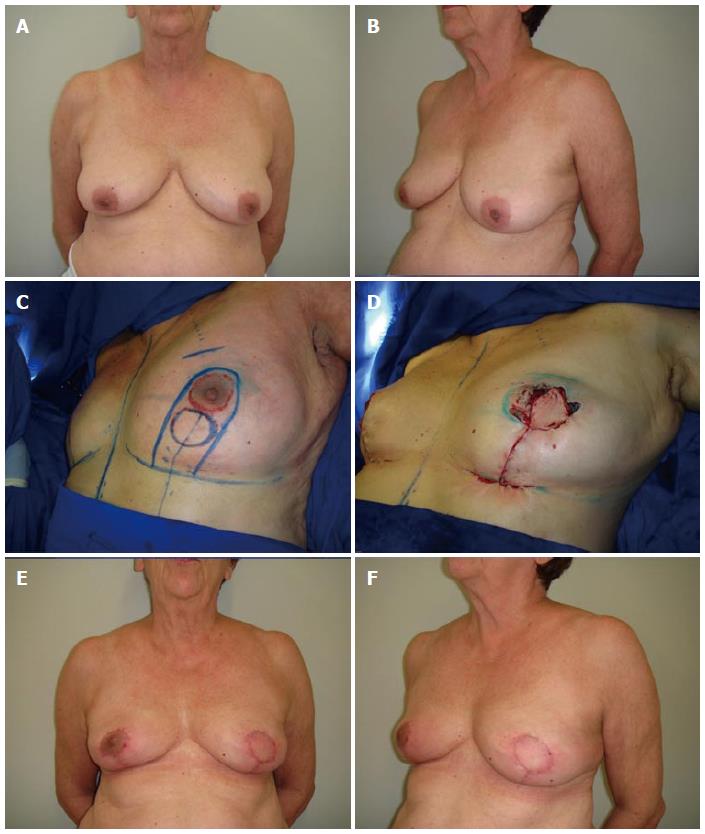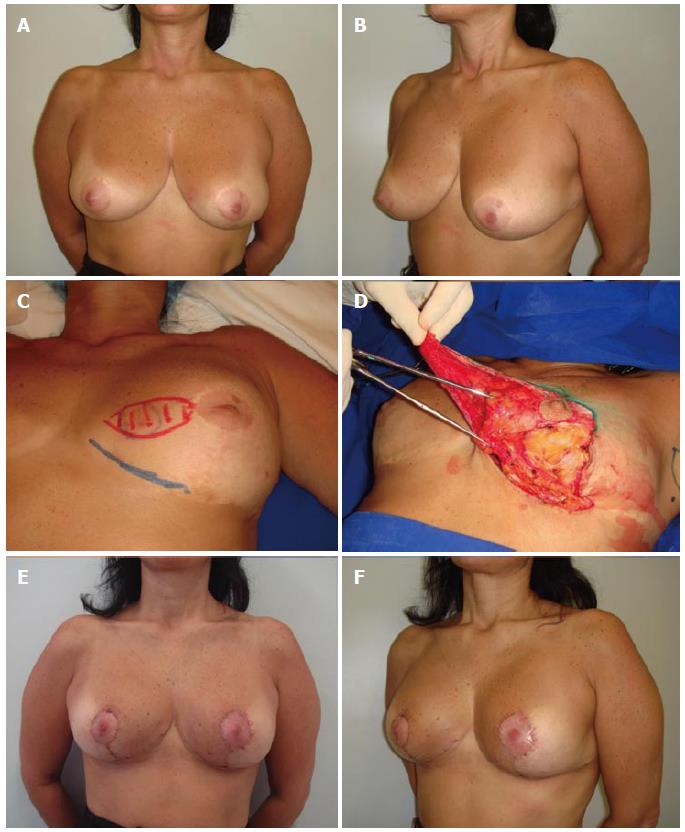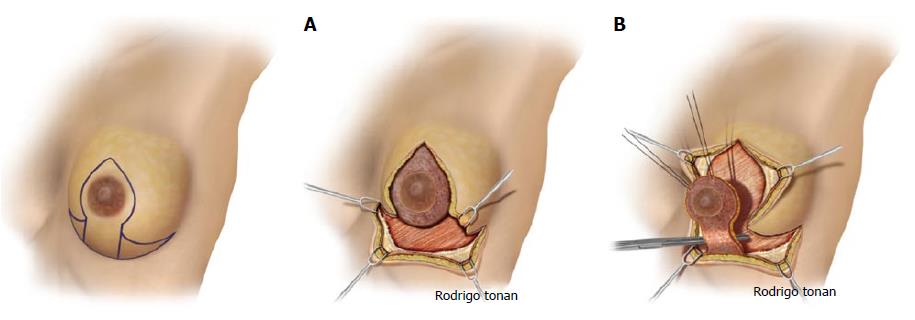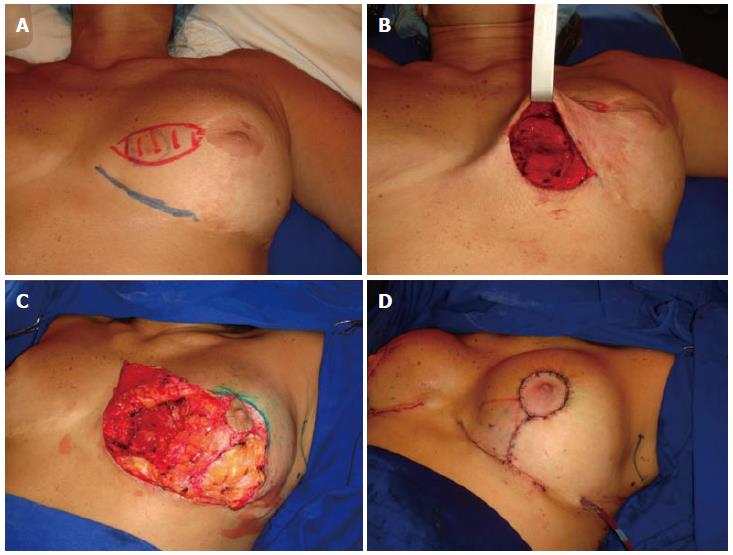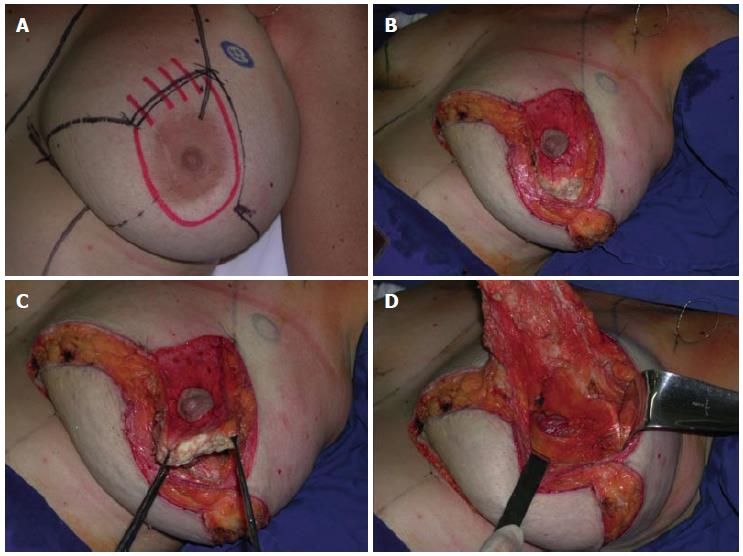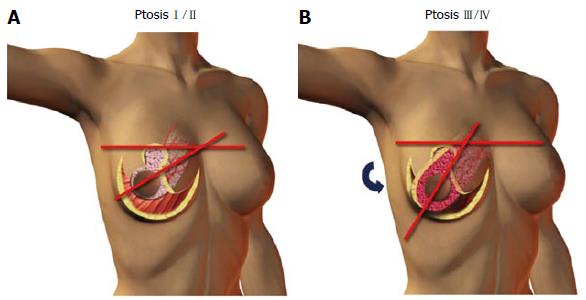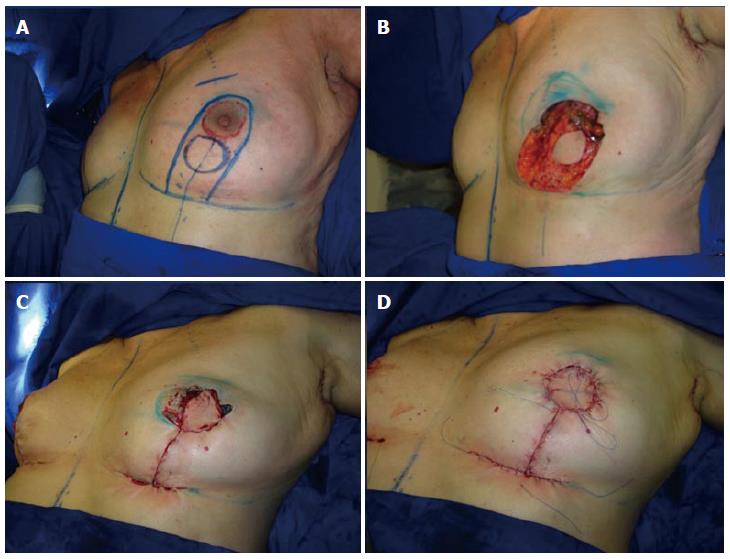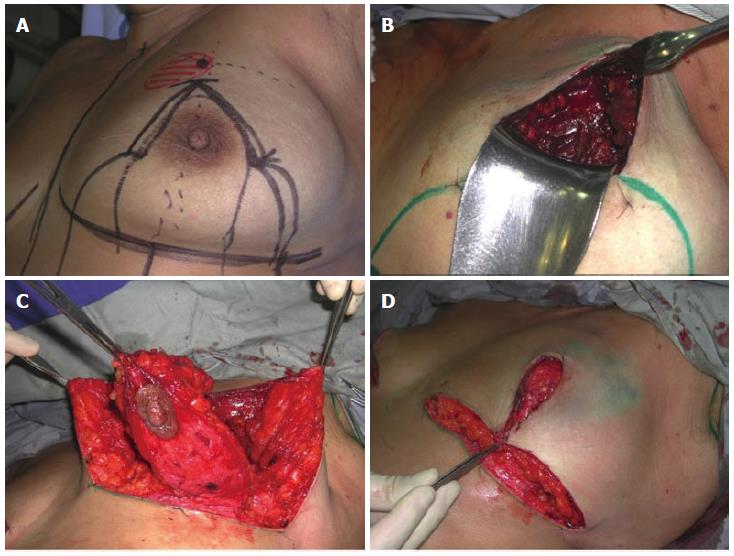Copyright
©2014 Baishideng Publishing Group Co.
World J Clin Oncol. Feb 10, 2014; 5(1): 1-18
Published online Feb 10, 2014. doi: 10.5306/wjco.v5.i1.1
Published online Feb 10, 2014. doi: 10.5306/wjco.v5.i1.1
Figure 1 Algorithm for immediate conservative breast surgery reconstruction based on the type of breast and extent of defect.
Figure 2 A 62-year-old patient with invasive ductal carcinoma (1.
7 cm) of the left breast. The patient underwent a left central quadrantectomy and sentinel lymph node biopsy, immediately followed by a therapeutic reduction mammaplasty Inferior Pedicle Technique reconstruction (A-B, above left and right); A total of 78 g was removed from the left breast (C-D, center left and right); One year postoperative appearance after the radiotherapy (E-F, below left and right).
Figure 3 A 48-year-old patient with invasive ductal carcinoma (3.
2 cm) of the inferior-medial quadrant of the left breast. The patient underwent a left inferior-medial quadrantectomy and sentinel lymph node biopsy, immediately followed by a therapeutic reduction mammaplasty Superior-Lateral Pedicle Technique reconstruction (A-B, above left and right); A total of 125 g was removed from the left breast (C-D, center left and right); Six months postoperative appearance after the radiotherapy with a very good outcome (E-F, below left and right).
Figure 4 A 58-year-old patient with invasive ductal carcinoma (5.
7 cm) of the superior quadrant of the left breast. The patient underwent a superior left quadrantectomy and axillary dissection, immediately followed by a therapeutic reduction mammaplasty Inferior Pedicle Technique reconstruction (A-B, above left and right); a total of 825 g was removed from the left breast (C-D, center left and right); One year postoperative appearance after the radiotherapy with a very good outcome (E-F, below left and right).
Figure 5 Schematic illustration of the therapeutic reduction mammaplasty surgical markings and Superior (A) and Inferior pedicle (B) techniques.
Figure 6 The superior-lateral pedicle technique for inferior-medial quadrantectomy reconstruction.
For tumors located in the lower pole of the breast, the tumor resection can be incorporated into the sector of breast tissue removed as part of a superior pedicle mammaplasty (A-B); For inner region tumors, the reduction pattern can be rotated and a superior-lateral (C); The opposite breast surgery is usually performed to match the appropriate symmetry (D).
Figure 7 The superior-medial pedicle technique for superior-lateral quadrantectomy reconstruction.
For superior and outer region tumors, the reduction pattern can be rotated and a superior-medial (A-D).
Figure 8 Schematic illustration of the superior-medial pedicle technique according to the degree of breast ptosis and the rotation of the pedicle.
With the objective of improving the nipple-areola complex (NAC) vascularization and to avoid pedicle torsion, it is important to define the right position of the NAC pedicle according to the degree of breast ptosis and hypertrophy. It is important to locate the pedicle lower down when the degree of ptosis and migration of the NAC is greater to avoid marked rotation.
Figure 9 Inferior pedicle technique for central quadrantectomy reconstruction.
For central region tumors (A), the lower breast and skin tissue may be moved into the defect as a skin-glandular flap and an inferior pedicle mammaplasty can be utilized (B-D).
Figure 10 Inferior pedicle technique for upper quadrantectomy reconstruction.
For upper region tumors (A), the lower breast and skin tissue associated with the nipple-areola complex may be moved into the defect as a skin-glandular flap and a conventional inferior pedicle mammaplasty can be utilized (B-D).
- Citation: Munhoz AM, Montag E, Gemperli R. Current aspects of therapeutic reduction mammaplasty for immediate early breast cancer management: An update. World J Clin Oncol 2014; 5(1): 1-18
- URL: https://www.wjgnet.com/2218-4333/full/v5/i1/1.htm
- DOI: https://dx.doi.org/10.5306/wjco.v5.i1.1










